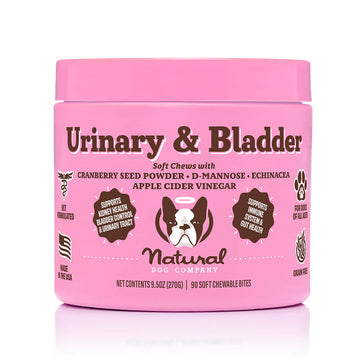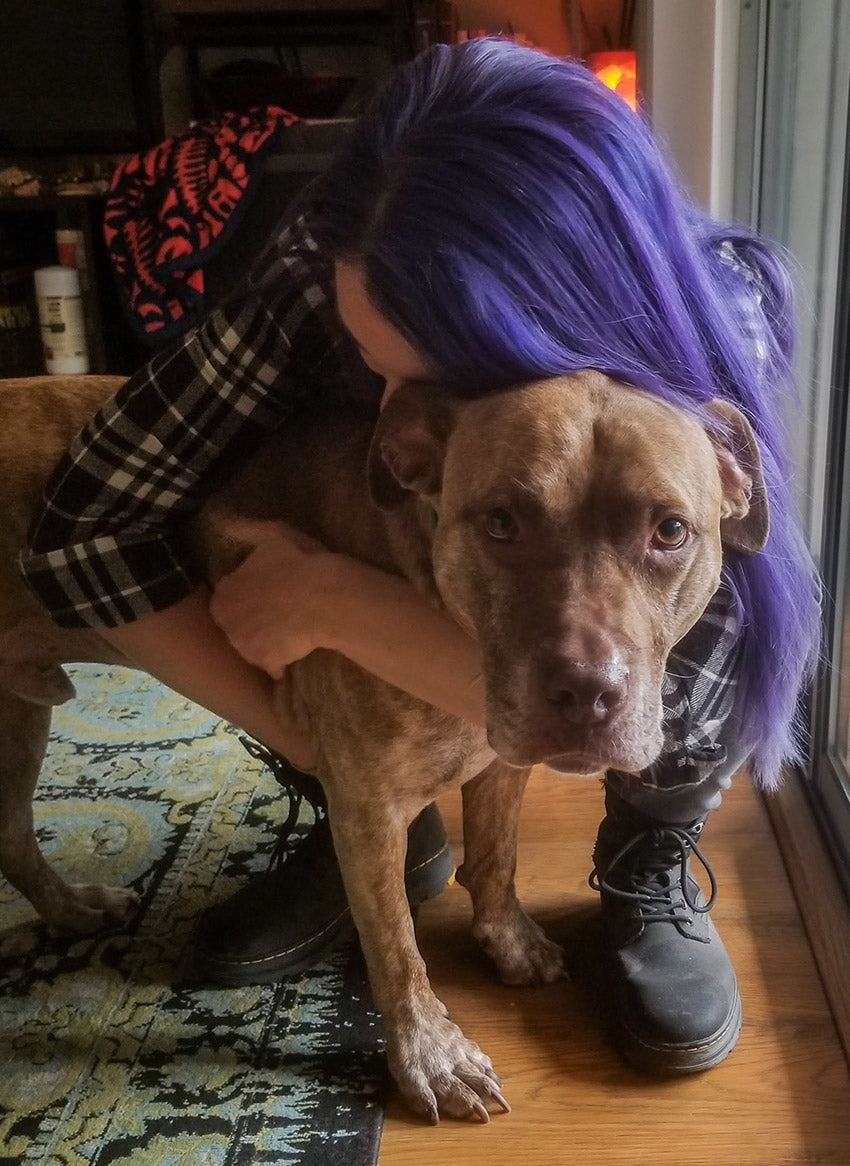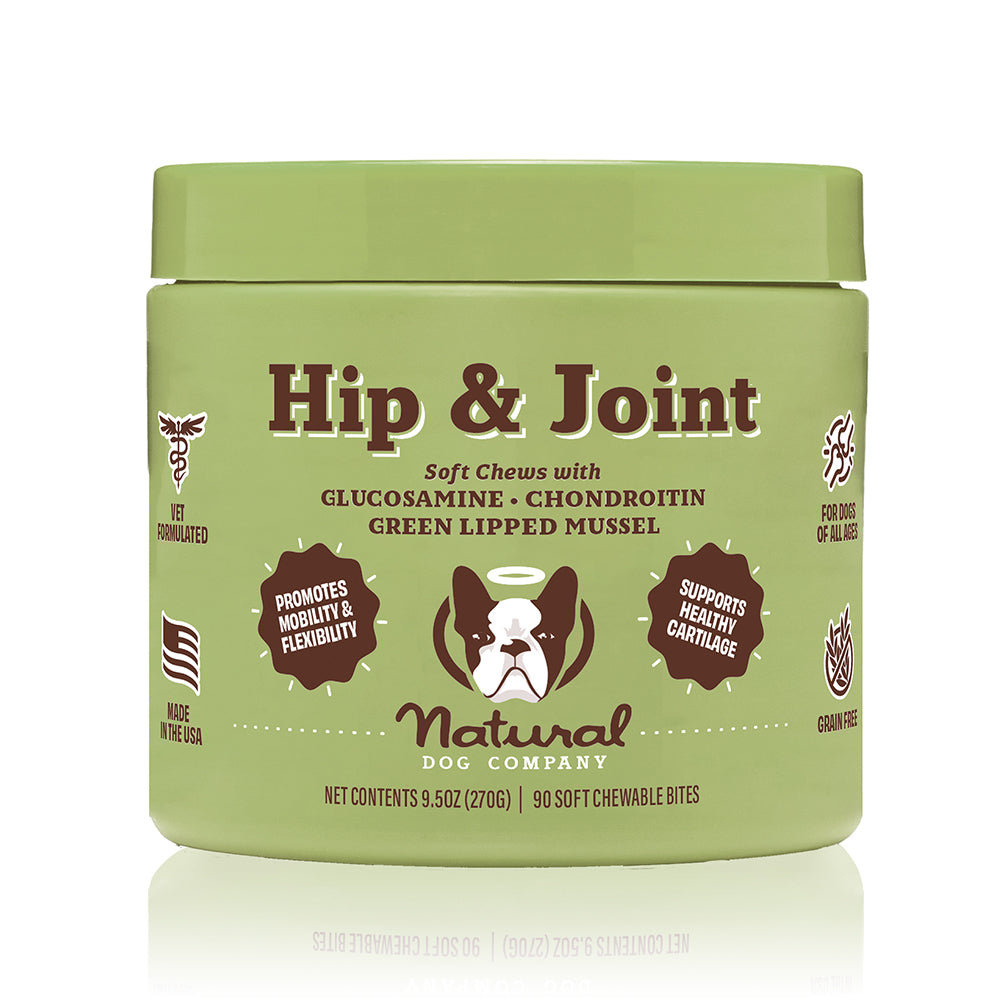There is a beauty and sadness in watching your beloved dog grow old. After so many years together, your trusted companion will be more loyal than ever, so watching them slow down certainly isn’t easy—especially if it’s due to health problems. From a graying muzzle to a loss of hearing to navigating more serious conditions, caring for an older dog can be trying emotionally and financially. But with a little senior dog care planning, you can make the aging process easier for the both of you.
Knowing your canine will face challenges in their golden years, it’s important to first define the term “senior dog,” and then learn about some of the most common problems you’ll encounter. So whether you have a middle-aged dog and are preparing for the future, have already noticed some signs of aging, or have adopted (or plan to adopt) an older dog, by the end of this article you’ll know what to expect with a senior dog, and how to keep them happy and comfortable as they grow older.
Just How Old Is a “Senior Dog”?

Right off the bat, it’s important to understand that adult dogs of different breeds, weights, and sizes age differently, so there’s no hard and fast rule to fall back on to determine if your dog is a senior. That means the “one human year = X dog years” equation is really a myth. However, a general rule of thumb is that one human year typically equates to seven years for smaller dogs, and six years for larger ones.
Of course, that rule still leaves a lot of gray area for dog owners. Individual dogs, especially mixed breeds, can qualify as seniors at varying ages based on their genetic makeup, medical history, and other factors. To be on the safe side, looking for signs of aging at six or seven years is simply a starting point. By remaining vigilant and keeping annual veterinarian appointments, most dog owners know when their dog is entering that senior citizen state of their life.
Common Senior Dog Problems and How to Cope
Whether your middle aged dog has gone gray—marking, at minimum, passage into middle age—or if you are considering adopting a senior dog, there are common behavioral and health conditions you can keep an eye on. But no matter the health issue, as your dog ages unconditional love will serve as your best compass for moving forward.
Arthritis
When it comes to your dog’s health, arthritis and joint pain are often the first signs of aging you’ll notice. Your dog may show slight signs of pain after a play date, or have trouble sitting or standing. Additional signs include stiffness, lower energy level, less interest in play, or attitude changes like increased irritability.
Solutions: This condition is very common, and also very simple to manage. You can:
- Provide supportive orthopedic beds in their favorite napping spots
- Use ramps or dog stairs to help them onto furniture (rather than jumping)
- Ask your veterinarian about prescription medications to help with pain and inflammation
Tooth Decay
Most dogs don’t receive proper dental care throughout their lives, so this can be common in older dogs. While this has less of an impact when they’re younger, compounded tooth decay can lead to dental diseases once your dog’s grown older.
Solutions: Much like your own teeth, they need more than just occasional TLC. You can offer your dog:
- Professional dental cleanings at the vet, annually
- Regular brushing (start this early if possible)
- Water additives or dental treats

Obesity
It’s no different for humans: when we start to slow down, our metabolism and activity decreases. Weight gain isn’t inevitable, but it’s a distinct possibility, especially if your dog isn’t as interested in physical activity.
Solutions: The problem with obesity is that it can compound other senior dog care issues such as arthritis and cancers, so it’s important to take action. You can:
- Offer regular low-impact exercise like long walks or gentle hikes
- Eliminate or reduce table scraps (offer healthy snacks like peeled and chopped fresh veggies, fruit, or low-sugar treats instead)
- Take them swimming or even walking through water
Urinary & Bladder Issues
As dogs age, their ability to control the neck of their bladder can deteriorate. This can lead to urine leakage when the exit of the bladder is not fully closed. The tell-tale signs of urinary and bladder issues include wet patches on bedding, damp legs, a peristent smell of urine, scalding on the skin, and an increased tendency to click around the back end.

Solutions: While there’s never an absolute guarantee that the problem will go away completely, incontinence is very common in senior dogs and also very simple to manage. You can:
- Use incontinence pads or absorbent bedding that is more hygienic and easier to clean than traditional bedding
- Make a point of washing and drying your dog’s back legs every morning to remove all traces of urine and discomfort.
- Give your dog plenty of opportunities to empty their bladder – take them outside as often as possible
It is very important to never try to resolve your dog's bladder incontinence by reducing their water intake! Unless there’s an underlying medical issue, it’s highly unlikely that your dog’s incontinence is caused by excessive drinking. They’ll always need plenty of water to drink, so taking away their supply can result in dehydration and a range of serious health issues which could cause them to become very ill.
Urine leakage is not your senior dog's fault, so the most important advice we can offer is to never scold your senior dog for having an accident.
Hearing Loss
Another common ailment for older pets, hearing loss is often mistaken for stubbornness, so it’s important to keep a close eye on your dog’s behavior. Because if your dog is getting up there in years, it’s possible they’re not ignoring your commands—they just might not be able to hear them.
Solutions: If your senior pet isn’t responding to sounds that used to excite them, like keys rattling, opening the food can, or a toy squeaking, then it might be time for a vet visit to assess the situation. To assist your dog, you can also:
- Add simple hand signals to verbal commands
- Step heavily as you move about the house to avoid startling the dog
- Stay alert on walks to defend your dog from being surprised by other dogs or pedestrians they may not be able to hear
Temperature Sensitivity

Once again, older pets are much like elderly humans when it comes to temperature sensitivity due to changes in metabolism. While this means they may get colder than they used to, it also means they may not be able to withstand hotter weather the way they could when they were younger.
Solutions: To make your dog more comfortable, there are a variety of simple—and perhaps even fashionable!—choices you can make. You can:
- Provide a warm coat for nighttime potty breaks and winter walks
- Pile those orthopedic beds with soft blankets for snuggling
- Place beds strategically in draft-free areas
- Limit exercise in hot weather as seniors are more susceptible to heat exhaustion
Increased Recovery Time
If your dog starts battling arthritis or joint pain, it only makes sense that their mobility is decreasing. So keep in mind their recovery time from an injury will be longer and tougher too, making it important to reduce the potential for falls or sprains.
Solutions: This is a scenario where you can give your older dog a helping hand—or in this case, a paw—to avoid any injuries. You can:
- Provide better traction with healthy paw pads via Paw Soother
- If you have hard floors, add more throw rugs with backing pads

Canine Cognitive Dysfunction Syndrome
Similar to Alzheimer’s disease in humans, symptoms in senior pets include disorientation, aimlessness, staring at walls or into space, changes in sleep cycles, having accidents in the house, or increased anxiety.
Solutions: First off, to protect against cognitive decline continue to keep your dog mentally stimulated even as they age. They may slow down physically, but continue to let them work their brains with games and puzzles as often as possible, even if you have to reward them with treats. While you should be as proactive as possible, you shouldn’t wait too long to visit a vet to receive a diagnosis if you see noticeable decline, especially for the symptoms noted above. From there, the vet may:
- Prescribe medication to slow the process
- Suggest treatments containing the omega-3 fatty acid DHA, which has been shown to reduce symptoms of CCDS in dogs
- Recommend cognitive enrichment activities, including exercise, positive social interaction, and new toys and tricks (and yes, you can teach an old dog new ones!)
Cancer
Unfortunately, cancer affects roughly half of pets over age 10, but the disease is often treatable if it’s caught early enough. This ties back to those annual veterinarian visits, which are always a crucial element of any senior dog care plan.
Solutions: No one likes to discuss the Big C, but attentiveness will serve you well since cancer can attack a dog internally and externally. You can:
- Pay attention to physical or behavioral changes, and consult with your veterinarian as they arise
- Request annual senior blood work to find issues as early as possible
- Occasionally check the body for nodules or masses in the skin, which could be mast cell tumors

The Most Important Part of Caring for a Senior Dog
It’s simply reality: senior dogs need more attention and emotional investment, and you should also expect more vet bills as they advance in years and you attempt to sustain their quality of life. While the solutions listed here are designed to provide you with potential steps you can take to ease your dog’s discomfort, patience is the starting point for any senior dog care plan. From accommodating them with beds and food to giving them ample time to adjust to a younger dog you decide to bring into your home, remaining compassionate and attentive will ensure you’re allowing them to age gracefully.
While discussing senior dog care can be a tough topic, there are distinct benefits to living in this day and age. There has never been a higher level of veterinary care or healthier dietary products for dog owners to depend on. Pets are living longer than ever before. But that doesn’t mean you should stop cherishing each and every moment you get to spend with them.













